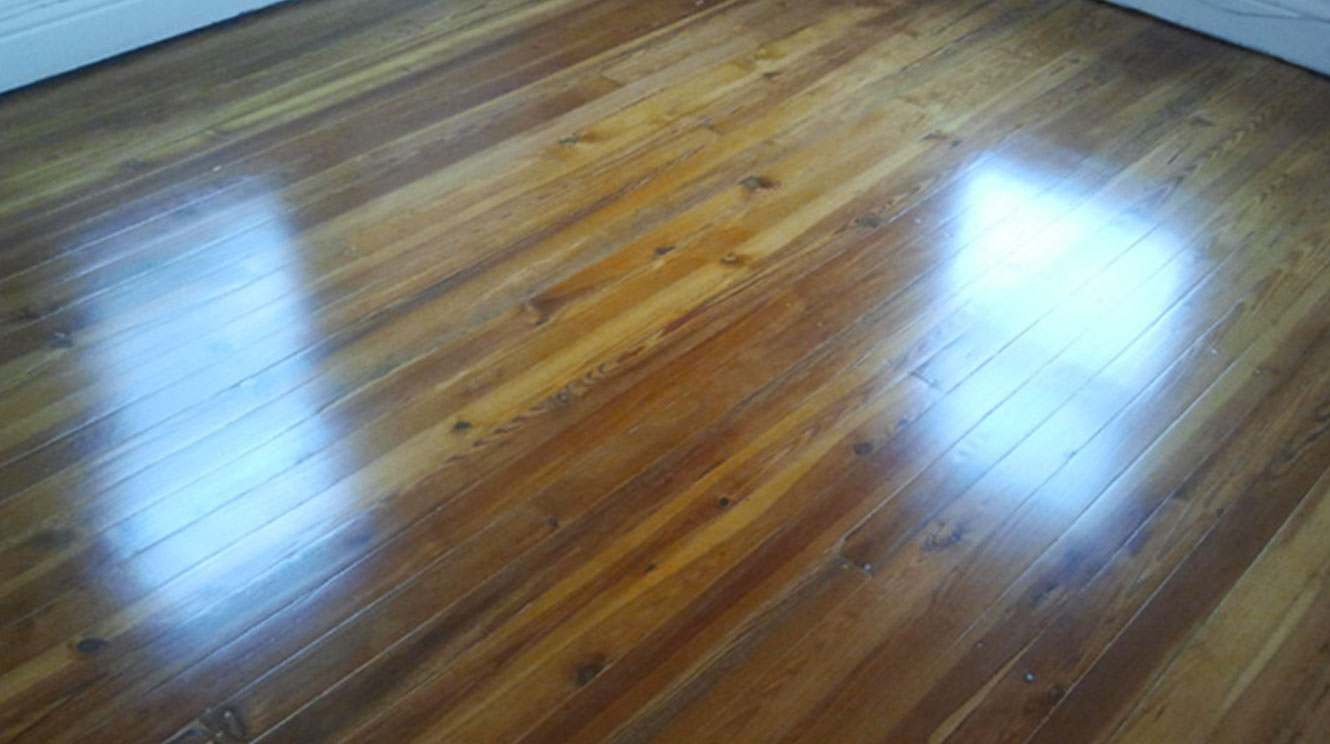(416) 273-4771
estimates@newridgerefinishing.com
(416) 273-4771
estimates@newridgerefinishing.com

Hardwood floors are gorgeous… but they require a fair amount of upkeep to stay gorgeous. We’re experts in all things wood-floor related, so we’ve created a guide that shows you how to maintain your floors, keep them looking great, and significantly extending their life. Read on to discover the best maintenance practices.
Avoid Cleaners That Leave Residue: Many wood cleaners (such as Murphy’s Oil Soap) claim to be acceptable for your floors, but the truth is sometimes they are not. A lot of cleaners leave behind residues that dull the shine of your floor. To determine whether a cleaner will leave residue, spray it on a window and wipe it off. You will get an idea of what residue is being left on your floor by how clear the glass remains.
Neutral pH Is Good: A misconception is that vinegar and water makes an acceptable wood floor cleaner. This is not true. Vinegar is the common name for Acetic acid (pH 2.4) and can degrade your finish if used too much. Ammonia is also a very common cleaner that has a high pH (around 12), which can also ruin floor finish too. Proper hardwood floor cleaners available at the store are pH neutral and are not detrimental to your floor.
Avoid Debris: Granules of sand and small rocks that get stuck on the bottoms of your shoes can damage your hardwood floors. These small pieces of debris are akin to the minerals used in the sandpaper for our machines. To avoid debris, we recommend placing small rugs at exterior doors around the home and by the kitchen sink.
Products that add quick shine to your floors contain silicone. Silicone eliminates the chance for the wood finish to stick to your floor again. Examples of products that will likely create adhesion problems with your floor are the following:
Wood expands and contracts as humidity levels change. Especially here in the Southern Ontario, humidity varies greatly from season to season. This is what causes cracks and gaps in your floors, especially if you have wide plank.
In the colder months when you turn on your heating system, the humidity in your home will drop substantially. When this happens, everything made from wood, including your floors, will contract and shrink a little. This is normal and will not affect the structural stability of your floors. When the warmer weather rolls around and you open your house and turn off the heating system, your floors will expand and the minor gaps will disappear. If, however, you’d like to reduce the occurrence of gaps during the colder months, you can invest in a humidifier to control the humidity level in your home by 45 to 55 percent.
Here are a few key ways to have great looking hardwood floors if you’re a pet owner.
The Best Defense Is A Good Offense: Clipping your dog’s toenails can sometimes be challenging; however, we still recommend it once per month to avoid scratches on your wood floors.
Pet Urine Is Bad News: Pet urine can degrade finish as well as promote mold growth in wood flooring. Even though wood floors are coated with finish, they are not entirely impervious to liquids. Frequent pet urination in one area will stain the boards. To remove the stains, most often the boards need to be removed and replaced with new flooring.
Play Tug Of War On The Carpet: Fetch and tug of war with your dog are best done outside. But if the Ontario weather has you locked indoors, playing on your carpet rather than your wood floors is ideal.
If you would like to know more about maintaining your hardwood floors, read our Flooring FAQ. And if you need a floor or stair project, contact us today. We would be honored to hear from you.